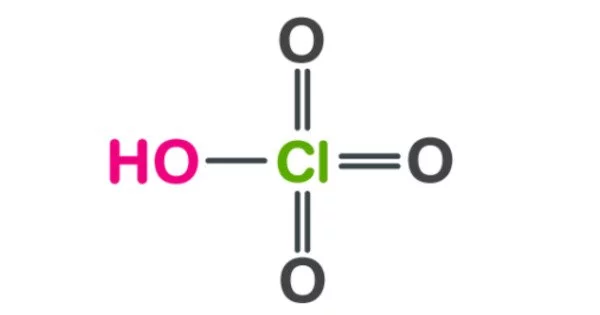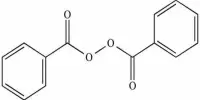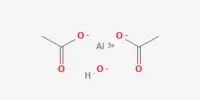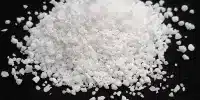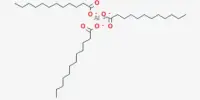Perchloric acid has the formula HClO4 and is a mineral acid. This colorless compound, which is usually found as an aqueous solution, is a stronger acid than sulfuric acid, nitric acid, and hydrochloric acid. It is a strong oxidizer when heated, but aqueous solutions containing up to 70% by weight at room temperature are generally safe, exhibiting only strong acid features and no oxidizing properties. Perchloric acid is useful for preparing perchlorate salts, particularly ammonium perchlorate, an important component of rocket fuel. Perchloric acid is extremely corrosive and easily reacts with other chemicals to form potentially explosive mixtures.
Production
There are two industrial routes for producing perchloric acid. The traditional method takes advantage of sodium perchlorate’s high aqueous solubility (209 g/100 mL of water at room temperature). When such solutions are treated with hydrochloric acid, perchloric acid is formed, which precipitates solid sodium chloride:
NaClO4 + HCl → NaCl + HClO4
Distillation can be used to purify the concentrated acid. Anodic oxidation of aqueous chlorine at a platinum electrode is a more direct and salt-free alternative route.
Perchloric acid is extremely corrosive to many materials, including metals, organic compounds, and even glass. It can react violently with combustible and reducing substances, making it highly hazardous. Special precautions are necessary when handling perchloric acid due to its corrosive and reactive nature.
Properties
At room temperature, anhydrous perchloric acid is an unstable oily liquid. It forms at least five hydrates, several of which have been crystallographically characterized. The perchlorate anion is linked to H2O and H3O+ centers via hydrogen bonds in these solids. Hydronium perchlorate is one example. With water, perchloric acid forms an azeotrope that contains approximately 72.5% perchloric acid. This form of the acid is commercially available and is indefinitely stable. These types of solutions are hygroscopic. Concentrated perchloric acid dilutes itself by absorbing water from the air if exposed to air.
Dehydration of perchloric acid gives the anhydride dichlorine heptoxide:
2 HClO4 + P4O10 → Cl2O7 + H2P4O11
Uses
Perchloric acid finds applications in various fields, including analytical chemistry, organic synthesis, electrochemistry, and pharmaceutical manufacturing. It is commonly used as a reagent in laboratory experiments and as an etchant in metal surface treatments.
